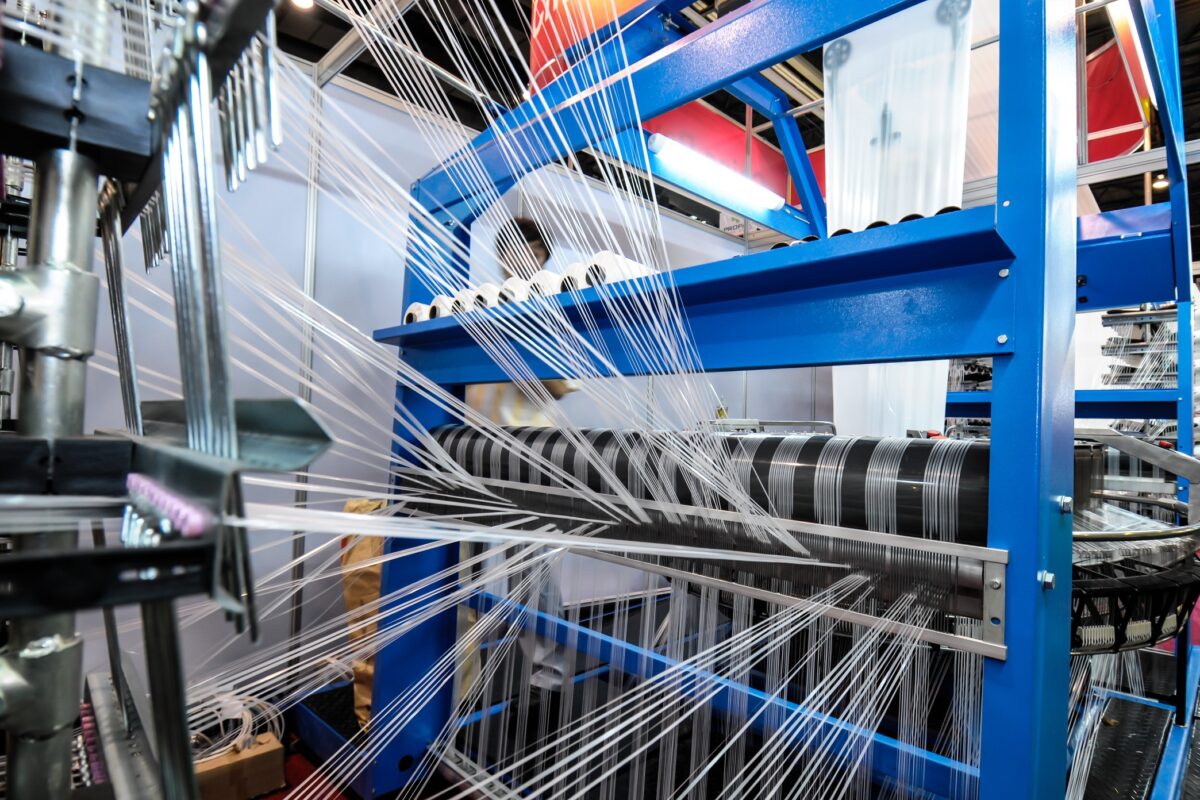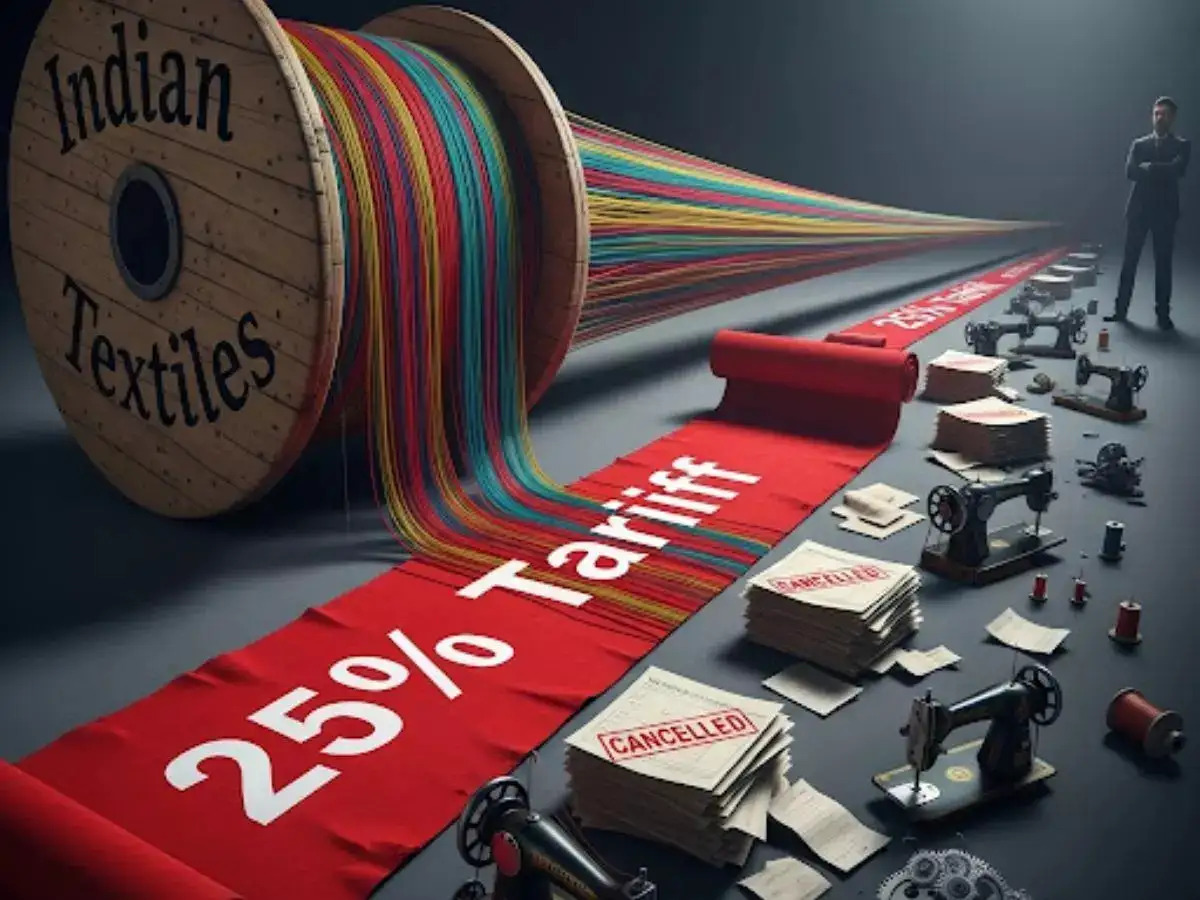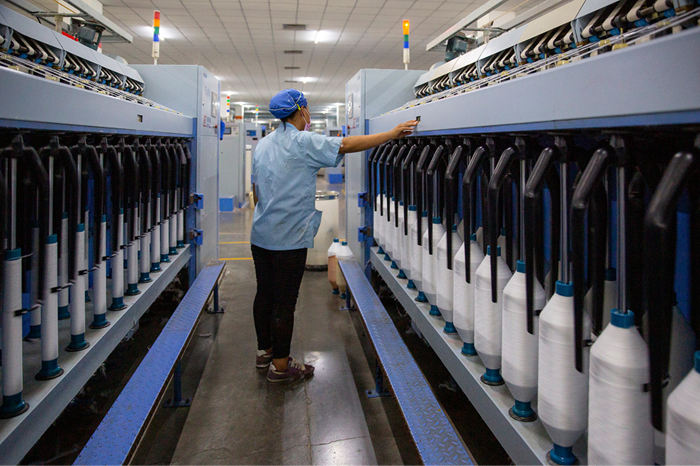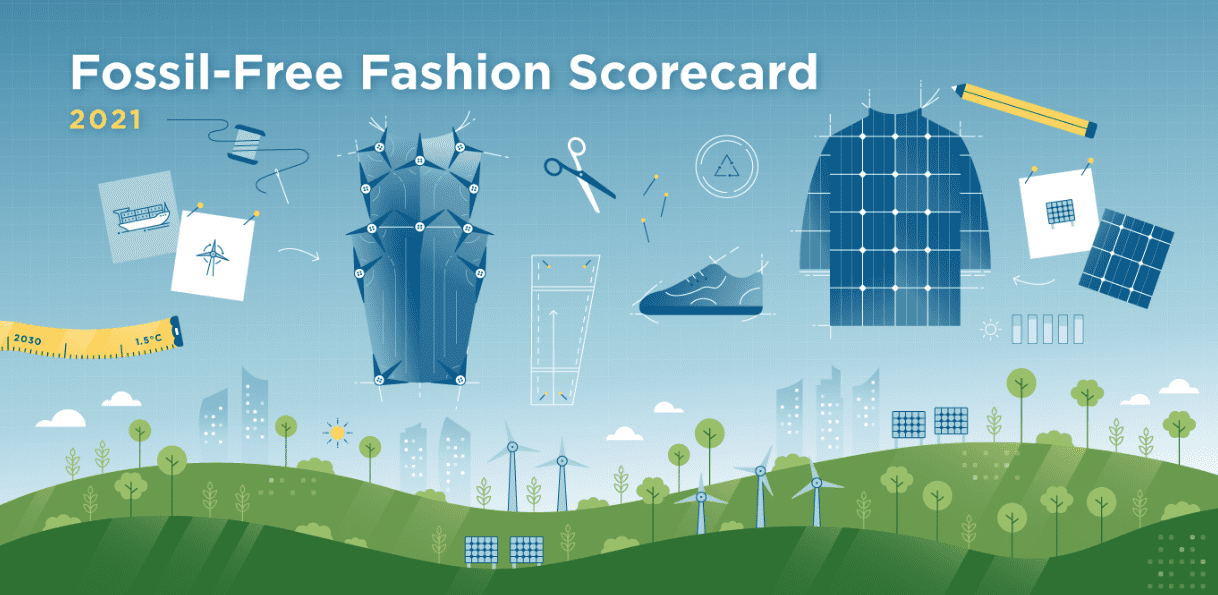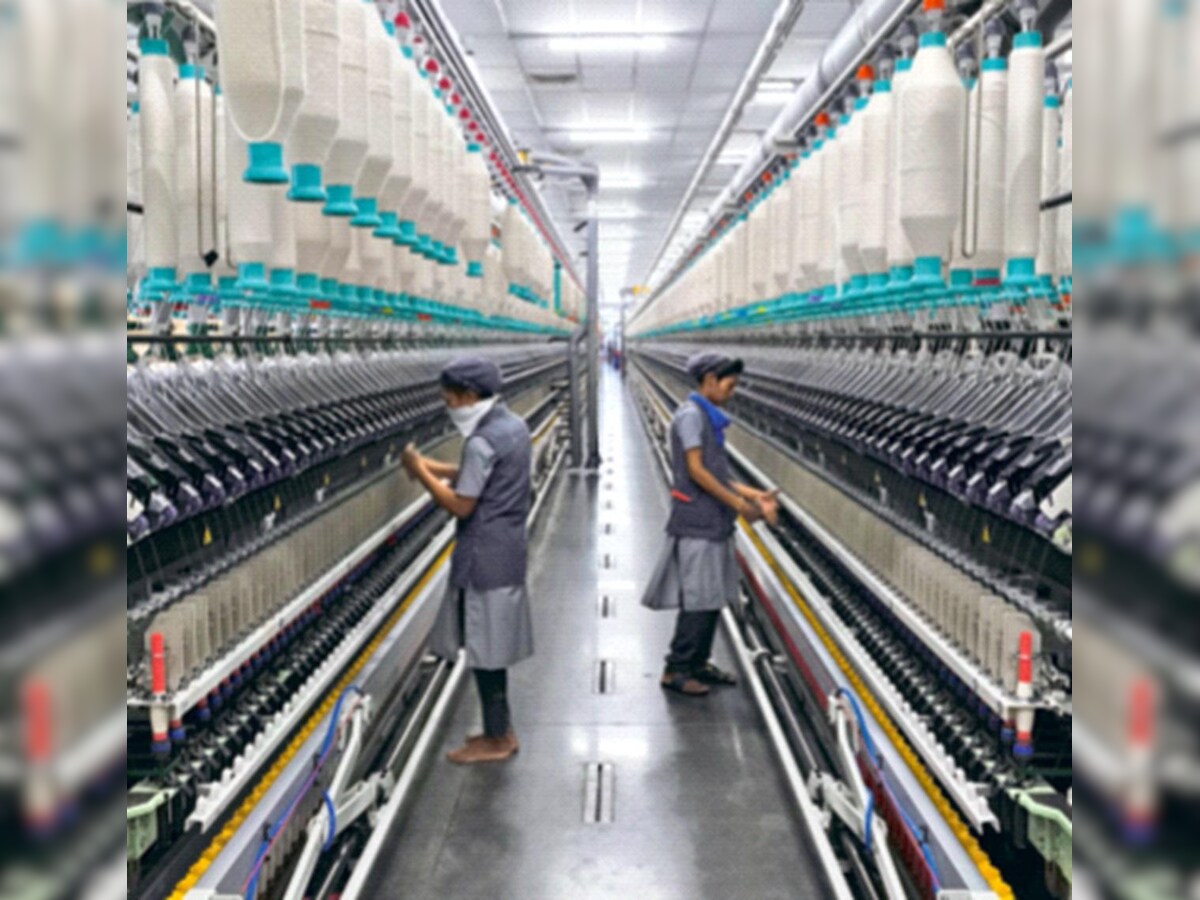FW
Vietnam’s textile-garment exports are up 10 per cent in 2015 as against 2014. Apparel shipments to the US have climbed nearly 13 per cent this year while exports to the EU have grown six per cent, to Japan by eight per cent and to South Korea by 8.77 per cent.
However, despite a jump in apparel exports this year, profits remained low as firms have had to cut prices to compete with rivals amid a global economic slump and fall of many currencies against the US dollar. For instance, China, India and Indonesia devalued their currencies, making exports more competitive. Therefore, Vietnamese manufacturers have had to cut prices, leading to lower profits. On the other hand, cotton prices have plunged below 60 cents per pound and filament polyester prices dipped to their lowest in October. This left a negative impact on cotton producers, who had to lower prices or suspend deliveries.
The textile-garment sector will have to cope with a slew of challenges in 2016 as the exchange rate with the dollar will likely fluctuate. This will affect firms’ export prices, revenue and profit. However, Vietnam’s participation in bilateral and multilateral free trade agreements has made the country’s textile-garment products attractive to importers.
Japan is a promising market for Pakistani textile products but Pakistan is facing a disadvantageous position because of differential market access, as compared to regional competitors like India, Bangladesh and other Asean countries. Other regional countries enjoy duty free access to the Japanese market, either because of regional trading arrangements or having a LDC status.
Although Pakistan has GSP Plus status and is facing on an average lower duties than other countries, the tariff imposed on Pakistan’s exports is higher than the tariff imposed on exports from India, Bangladesh and Asean countries. Since the establishment of diplomatic relations between the two countries, Japan has always remained at the forefront to assist Pakistan in socio-economic development.
The automobile industry of Japan and the textile industry of Pakistan have contributed significantly to the good relationship between two countries. Pakistani raw cotton had supported the textile industry in Japan after World War II and contributed to the economic revival of Japan. Japan in turn has cooperated with Pakistan in various sectors, especially in the field of education.
Japan has expressed its desire to support the Pakistani textile industry in 2016 in order to produce high value added products and strengthen its international competitiveness.
According to the China Chemical Fiber report, in the year of 2016, China nylon 66 chip market will see development of three plants, joining in or expanding original capacity, enlarging total domestic nylon 66 chip capacity to 505kta, significantly up 74 per cent year on year. There would be a rising competition in China among the four major producers, Shenma, Huafon, Xingjia (including Anshan Guorui), and Huayang. In March 2014, Invista entered the market with the construction of a new 150kta hexamethylene diamine (HMD) plant and a 150kta nylon 66 polymer plant at the Shanghai Chemical Industry Park in Shanghai, China.
Invista has announced plans to add a 300kta adiponitrile (ADN) plant at the site in future using its proprietary technology, and would supply to its downstream HMD production in the future. The three plants would be located adjacent to each other. The HMD plant is expected to start commercial production in early 2016, followed by its nylon 66 polymer production in May 2016. In the year of 2016, apart from Invista, nylon 66 chip plants, integrated with both HMD and polymer production, are only two, Shenma and Xingjia (including Anshan Guorui).
In 2015, Shenma has close-to half of China’s nylon 66 chip production capacity, followed by Huafon (28 per cent), Xingjia (17 per cent) and Huayang (7 per cent). The pattern will be changed in 2016, as Invista will be the largest nylon 66 chip producer in China, taking a proportion of 29 per cent, followed by Shenma (28 per cent), Xingjia (20 per cent), Huafon (16 per cent), and Huayang (7 per cent). However, with 74 per cent capacity increase in 2016, the actual growth in supply (import and domestic production) will be much smaller.
Invista will not only supply nylon 66 chip polymer (150kta) but also HMD (215kta) to China. The consumption of HMD is 0.45mt for per metric ton production of nylon 66 chip, theoretically using 67.5kt HMD, and the rest will be supplied to other polymer producers, Huafon and Huayang. It will be much cheaper than import raw materials with saved tariff and transportation fees. Therefore, the cost edges, originally enjoyed by only two integrated plants, Shenma and Xingjia, will also be shared by Huafon and Huayang.
www.ccfgroup.com
www.invista.com
According to the China Chemical Fiber report, in the year of 2016, China nylon 66 chip market will see development of three plants, joining in or expanding original capacity, enlarging total domestic nylon 66 chip capacity to 505kta, significantly up 74 per cent year on year. There would be a rising competition in China among the four major producers, Shenma, Huafon, Xingjia (including Anshan Guorui), and Huayang. In March 2014, Invista entered the market with the construction of a new 150kta hexamethylene diamine (HMD) plant and a 150kta nylon 66 polymer plant at the Shanghai Chemical Industry Park in Shanghai, China.
Invista has announced plans to add a 300kta adiponitrile (ADN) plant at the site in future using its proprietary technology, and would supply to its downstream HMD production in the future. The three plants would be located adjacent to each other. The HMD plant is expected to start commercial production in early 2016, followed by its nylon 66 polymer production in May 2016. In the year of 2016, apart from Invista, nylon 66 chip plants, integrated with both HMD and polymer production, are only two, Shenma and Xingjia (including Anshan Guorui).
In 2015, Shenma has close-to half of China’s nylon 66 chip production capacity, followed by Huafon (28 per cent), Xingjia (17 per cent) and Huayang (7 per cent). The pattern will be changed in 2016, as Invista will be the largest nylon 66 chip producer in China, taking a proportion of 29 per cent, followed by Shenma (28 per cent), Xingjia (20 per cent), Huafon (16 per cent), and Huayang (7 per cent). However, with 74 per cent capacity increase in 2016, the actual growth in supply (import and domestic production) will be much smaller.
Invista will not only supply nylon 66 chip polymer (150kta) but also HMD (215kta) to China. The consumption of HMD is 0.45mt for per metric ton production of nylon 66 chip, theoretically using 67.5kt HMD, and the rest will be supplied to other polymer producers, Huafon and Huayang. It will be much cheaper than import raw materials with saved tariff and transportation fees. Therefore, the cost edges, originally enjoyed by only two integrated plants, Shenma and Xingjia, will also be shared by Huafon and Huayang.
www.ccfgroup.com
www.invista.com
Ghana’s local market has been suffering over the last one decade since it is flooded with cheap imports, mainly arriving from China. Experts point out that the employment in the domestic industry is now reduced to mere 3,000 jobs from almost ten times this number in 1980s.
According to Charles Asante-Bempong, Director at the Ghana Employers’ Association (GEA), the low quality copies of goods flooding the markets are killing domestic manufacturing businesses. Also, raw materials is another issue. Except for locally produced cotton used by the manufacturers, many of the dyes, chemicals and machines are imported from abroad at very high rates. For example, located in Tema, GTP is one of only four factories still operating. Renowned for its traditional designs and wax printed fabrics, the company has seen production levels drop 30 per cent and its production unit half since 2005.
Dealing with counterfeit good has become a huge issue and lack of government support is further damaging the prospects of once flourishing textile industry.
www.ghanaemployers.com
Spandex, a copolymer based on polyurea-polyurethane also known as elastane are used in a wide range of textiles due to its qualities like strength and strong elasticity as well its ability to return to its original shape after stretching as compared to ordinary fabrics. The global market for spandex has been constantly increasing due to rising demand from the textile and apparel industry.
However, on the other hand, the prices of spandex are witnessing a fluctuation at minimal rates. In early July 2014, prices of spandex were reduced due to weak trading activities, as well as the easing of tight supply of spandex and low demand from the downstream market. Although the market for spandex is currently growing, it has been extremely challenging with demand being weak in emerging economies such as the US since the global economic slow-down in 2008.
Spandex was first manufactured by E. I. du Pont de Nemours and Company. The fibers of spandex are manufactured through various processes such as solution wet spinning, solution dry spinning, reaction spinning and melt extrusion. All the processes include the reaction with monomers to develop a prepolymer, after which it is reacted further through certain techniques to finally make the fibres. Among all the methods, dry spinning is the most preferred choice for manufacturing spandex fibres.
After receiving four coveted awards in 2015 – Global Leadership Award in Sustainable Apparel (GLASA) 2015; Organic Cotton Round Table Innovation Challenge Award 2015; India International Trade Fair 2015 (Best display Award-Integrated Skill Development Scheme); and Maximum employment Provider Award (Large Industry Category for 2014), Pratibha Syntex is looking forward to achieving a growth target of Rs 1,500 crores by 2020.
Its sustainability efforts were also lauded as it received verification for water and carbon footprint by KPMG and life cycle analysis for cotton modal, spun dyed viscose, cotton viloft and recycled poly cotton. The company is known for its inner wear, leggings, tops, tees and polo shirts, among others and reported a group turnover of Rs 822 crores in the financial year 2014-15.
While the decline in currencies like euro and rand impacted its export business last year, the company is looking forward to an export growth of Rs 600 crores next year.
www.pratibhasyntex.com
Readymade garment exporters from Bangladesh have said that delay in releasing imported goods by the customs at the Hazrat Shahjalal International Airport (HSIA) is seriously affecting the whole garment export supply chain.
"We are not receiving our imported raw materials in time due to overall security measures taken by the airport authority and lack of coordination among different agencies including civil aviation, customs and Biman involved with the process," Md Siddiqur Rahman, President of Bangladesh Garment Manufacturers and Exporters Association (BGMEA), said while speaking to the media on Saturday.
Apparel exporters have to import many accessories including 'price' and 'security' tags selected by buyers and raw materials such as fabrics and product samples for completing export orders, he explained, adding, in recent times especially since the beginning of the current month, exporters were facing difficulties in getting their required imported consignments and in some cases, it was taking more than two weeks compared to a single day, needed previously, while some containers even went missing.
Imported raw materials worth millions of taka were getting damaged as the apparel makers are not being able to receive their required imported goods in time, Rahman said.
www.bgmea.com.bd
Maharashtra is taking steps to boost its textile sector. A mega textile hub is being planned for the cotton-growing Vidarbha area. The Maharashtra Textile Policy 2011-17 had stipulated generation of 11 lakh jobs and investment worth Rs 40,000 crores. The aim was to utilise 45 lakh surplus cotton bales produced in the state.
Only 112 projects, worth Rs 3,300 crores, have been completed till now, creating 27,700 jobs. This means only 2.5 per cent of jobs and 8.25 per cent of the projected investment have come into existence. As many as 967 projects worth Rs 9,749 crores were approved in the state, which were to generate employment for 57,000 people.
The new textile policy seeks to offer equity support to new cooperative spinning mills in Vidarbha, Marathwada and North Maharashtra as per the financial pattern 5:45:50, apart from 10 per cent capital subsidy for new projects in the three regions. The policy will launch a skill development program and seeks to review and modify various regulatory provisions of labor and environmental laws, which adversely affect the growth of the textile sector.
Half of the jobs in the textile sector will be created through smaller projects, each worth Rs 10 crores or less. Over 840 projects in this category are expected to give jobs to 27,000 people.
The National Textile Corporation (NTC) has begun e-auction of yarn. The decision to adopt e-auctions has been taken to give maximum opportunity to dealers for lifting of NTC stock and thereby reduce inventory and improve cash flow. The transparent electronic bidding process is also expected to result in better price discovery of the yarn stock.
The e-auction route has been made open for all registered dealers of NTC. Each dealer has been provided a unique ID and password, and trained by way of mock e-auctions and practice sessions. In future, e-auction shall be extended to the open market as well but after registering the dealers.
Base prices will be fixed every Wednesday and the e-auction will take place on Thursday. The sale shall be completed and the material will be allotted as per the highest bid and quantity, as the case may be. There may be more than one winner for one count of yarn.
Currently, yarn is sold through dealers, registered mill-wise with NTC as per procedure. Prices are fixed every Wednesday and the yarn is sold to dealers at certain rates for the entire week. At present, four to six dealers are registered with each mill. If the material is not sold, it remains unsold and the stock piles up.
ntcltd.co.in/




